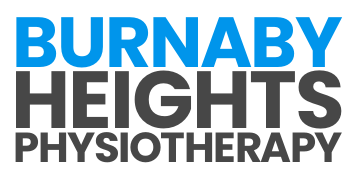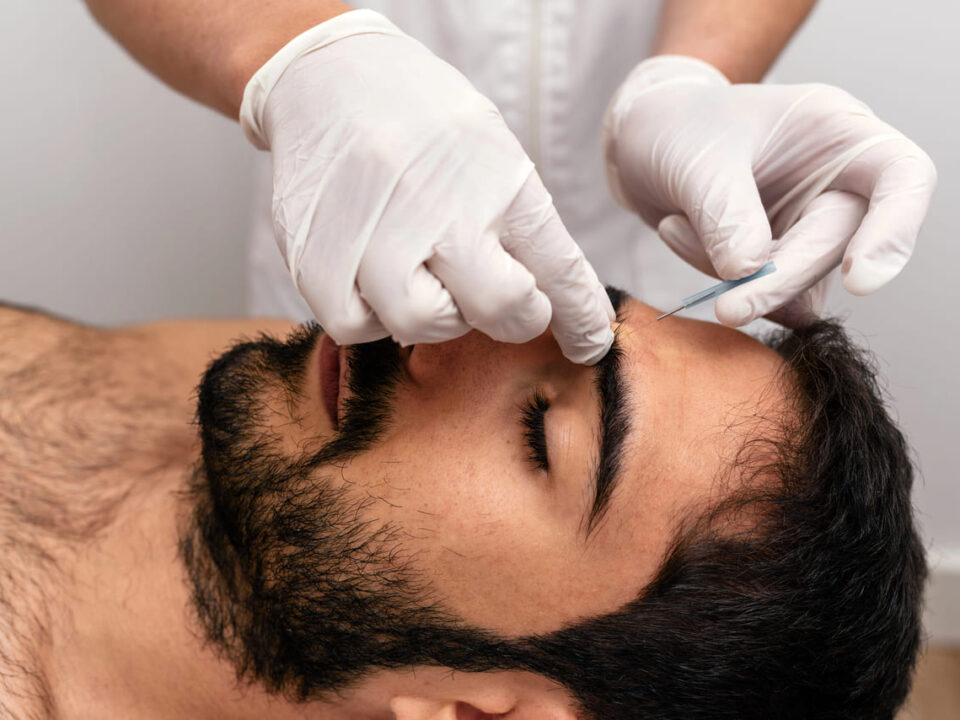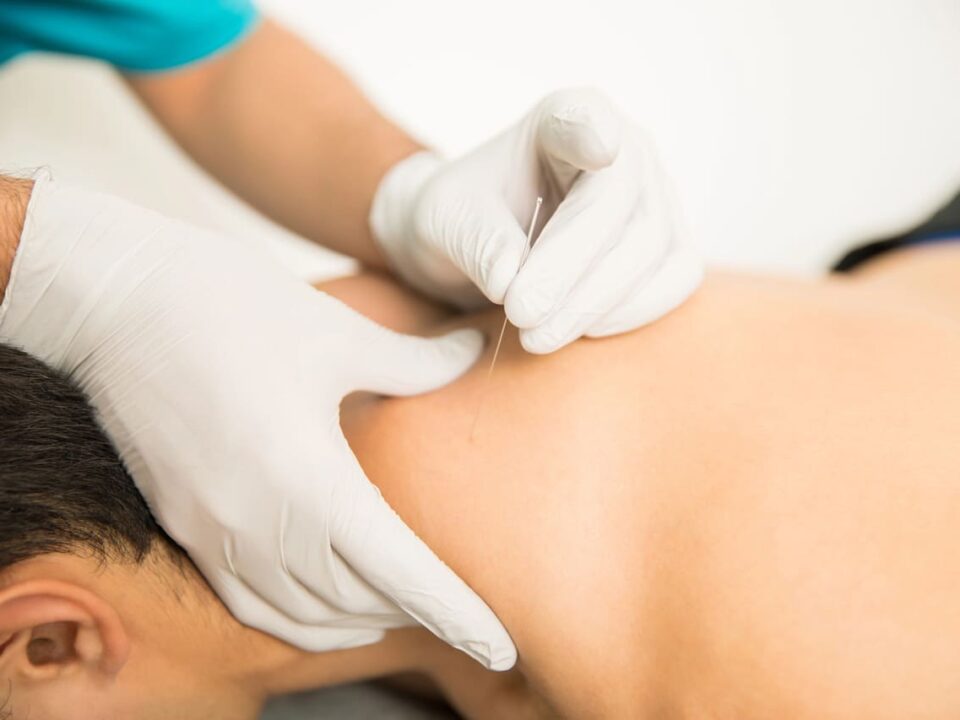
Improving Fitness and Function: The Benefits of Physiotherapy
November 15, 2024
Optimized Movement and Injury Prevention Through Physiotherapy
December 16, 2024Injury recovery often demands more than just rest and medication. Acupuncture, a time-tested therapy rooted in traditional Chinese medicine, has gained recognition for its ability to alleviate pain, enhance healing, and restore balance. Whether you’re dealing with a sports injury, post-surgical recovery, or chronic discomfort, acupuncture offers a holistic solution to support your body’s natural recovery processes. In this blog, we’ll explore how acupuncture works, the types of injuries it can treat, and what to expect during treatment.
Understanding Acupuncture and Its Role in Injury Recovery
Acupuncture is a traditional Chinese medicine practice that involves the insertion of thin needles into specific points on the body. These points, known as acupoints, are believed to stimulate the body’s energy flow, or “Qi,” to restore balance and promote natural healing. From a scientific perspective, acupuncture stimulates nerves, muscles, and connective tissues, which increases blood flow and activates the body’s natural painkillers.
For injury recovery, acupuncture offers multiple benefits:
- Pain Relief: Acupuncture reduces pain by releasing endorphins and calming overactive pain pathways.
- Inflammation Reduction: By improving circulation, acupuncture helps reduce swelling and inflammation, which is especially useful for acute injuries like sprains or muscle tears.
- Muscle Relaxation: Injuries often lead to muscle tension or spasms. Acupuncture relaxes tight muscles and promotes flexibility.
- Enhanced Healing: Acupuncture increases oxygen and nutrient delivery to injured tissues, accelerating the repair process.
Whether combined with physiotherapy or used as a standalone treatment, acupuncture provides a comprehensive approach to injury recovery.
Common Types of Injuries Acupuncture Can Help Treat
Acupuncture is effective for treating a wide range of injuries, making it a versatile addition to recovery plans. Some common types of injuries acupuncture can address include:
- Soft Tissue Injuries: Conditions like sprains, strains, and tendonitis benefit from acupuncture’s ability to reduce inflammation and promote tissue repair.
- Sports Injuries: Athletes with overuse injuries, ligament tears, or muscle imbalances can use acupuncture to speed up recovery and relieve pain.
- Back and Neck Pain: Acute or chronic pain caused by injuries to the spine, muscles, or ligaments can be alleviated through targeted acupuncture.
- Post-Surgical Recovery: Acupuncture supports healing after surgeries, such as ligament repairs or joint replacements, by reducing pain and promoting circulation.
- Nerve Injuries: Conditions like sciatica or nerve entrapments are addressed effectively, with acupuncture alleviating nerve pain and improving function.
By targeting specific injury sites and addressing systemic imbalances, acupuncture helps people recover more efficiently and comfortably.
The Role of Acupuncture in Enhancing Overall Well-Being
Beyond treating injuries, acupuncture has a profound impact on overall well-being. This is particularly important during injury recovery, as physical healing often takes a toll on mental and emotional health.
- Stress Reduction: Acupuncture stimulates the parasympathetic nervous system, which promotes relaxation and reduces stress levels. A calm mind supports better physical healing.
- Improved Sleep: Recovery requires quality sleep, and acupuncture helps by addressing insomnia or discomfort that disrupts rest.
- Boosted Immunity: By regulating the body’s immune response, acupuncture helps ward off infections and supports the healing process.
- Energy Restoration: Injury recovery can be exhausting. Acupuncture rebalances energy levels, allowing people to regain vitality and focus.
Acupuncture’s holistic approach ensures that both the mind and body are aligned during recovery, creating an optimal environment for healing.
How Many Acupuncture Sessions Are Typically Needed for Injury Recovery?
The number of acupuncture sessions required for injury recovery varies based on the type and severity of the injury, as well as the individual’s overall health. For minor injuries, such as mild sprains or muscle tension, noticeable improvement may be achieved within 3–5 sessions. Chronic conditions or more severe injuries, like ligament tears or post-surgical recovery, often require a longer course of treatment, spanning 8–12 sessions or more.
Acupuncture treatment plans are highly personalized, and your acupuncturist will adjust the frequency and number of sessions based on your progress. Initially, sessions are typically scheduled once or twice a week to address acute symptoms and accelerate healing. As the injury improves, the frequency is reduced to maintain progress and support long-term recovery.
Consistency is key to achieving the best results. Combining acupuncture with other treatments, such as physiotherapy or home exercises, can further enhance the healing process and reduce the total number of sessions needed.
Your First Acupuncture Session: What to Expect
Your first acupuncture session is designed to assess your specific needs and create a customized treatment plan. Here’s what typically happens:
- Initial Consultation: The healthcare provider will review your medical history, discuss the nature of your injury, and ask about symptoms, lifestyle, and overall health.
- Physical Assessment: Depending on the injury, they may examine the affected area, assess mobility, or check for muscle tension and inflammation.
- Treatment Plan: Based on the consultation, the practitioner will outline a treatment plan, including the number of sessions and expected outcomes.
- Acupuncture Procedure: Thin, sterile needles are inserted into specific acupoints related to your injury or overall energy flow. The insertion is typically painless or results in minimal discomfort.
- Relaxation Period: Once the needles are in place, you’ll rest for 15–30 minutes while the treatment takes effect. Many people find this part deeply relaxing.
After the session, you may feel immediate relief or experience subtle changes in pain, mobility, or overall relaxation. Follow-up sessions will build on this progress to ensure lasting results.
Potential Side Effects or Risks Associated With Acupuncture
Acupuncture is a safe and well-tolerated treatment when performed by a licensed professional. However, like any medical procedure, it may have some mild side effects. Common and typically short-lived side effects include:
- Soreness: Mild soreness or tenderness at the needle insertion sites may occur, usually resolving within a day.
- Bruising: Occasionally, minor bruising may appear at acupoint locations.
- Fatigue: Some clients feel tired or drowsy after a session, which is a normal response to the body’s healing process.
Rare risks include dizziness, nausea, or minor bleeding at the needle sites. These issues are usually preventable with proper technique and by ensuring you are well-hydrated and have eaten before your session.
To minimize risks, always choose a qualified and licensed acupuncturist who follows strict hygiene protocols. Communicate openly about your medical history, current medications, and any concerns to ensure a safe and effective treatment experience.
Stop Pain in Its Tracks
Take control of your recovery journey with the natural healing power of acupuncture. Whether you’re managing an injury, dealing with chronic pain, or seeking enhanced well-being, acupuncture provides a safe and effective solution tailored to your needs. At Burnaby Heights Physiotherapy, our experienced team combines acupuncture with proven therapeutic techniques to accelerate your healing and restore balance. Contact us today to schedule your visit and take the first step toward a healthier, pain-free life!






